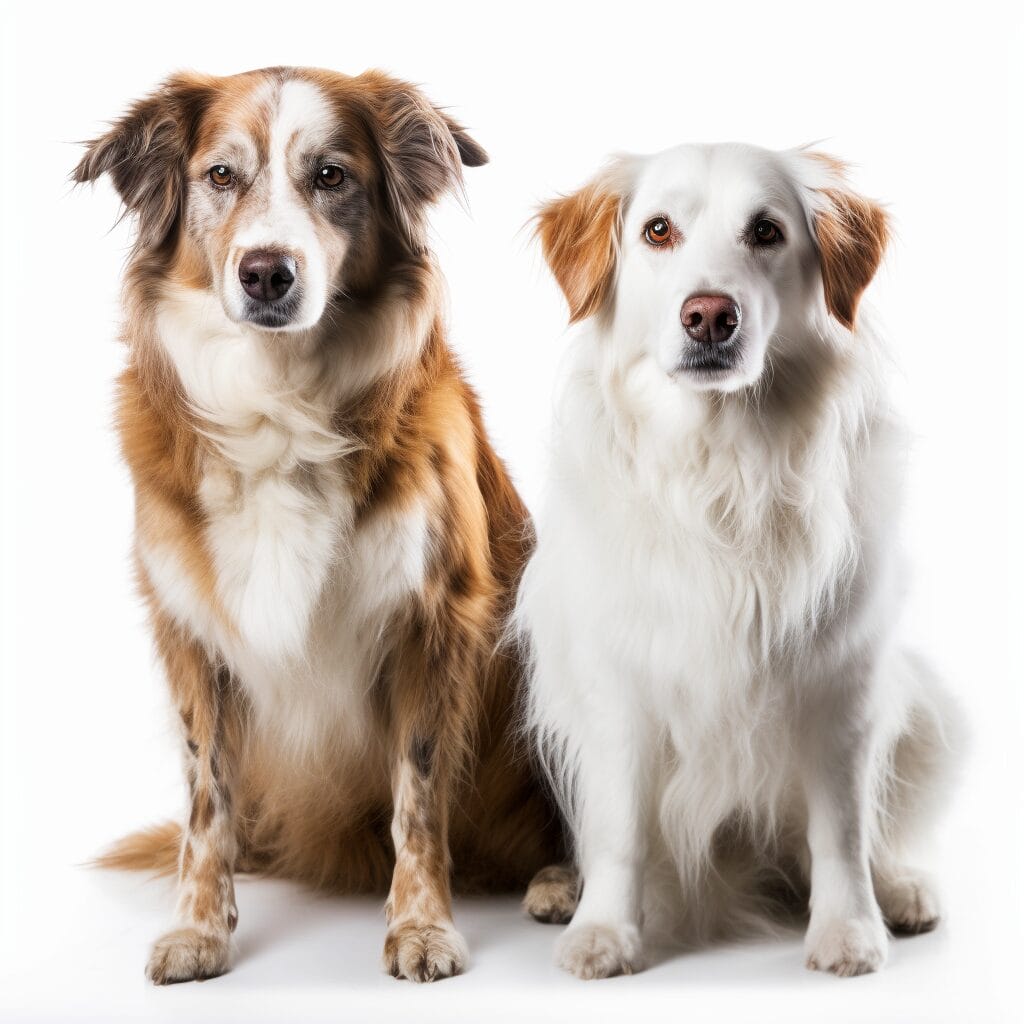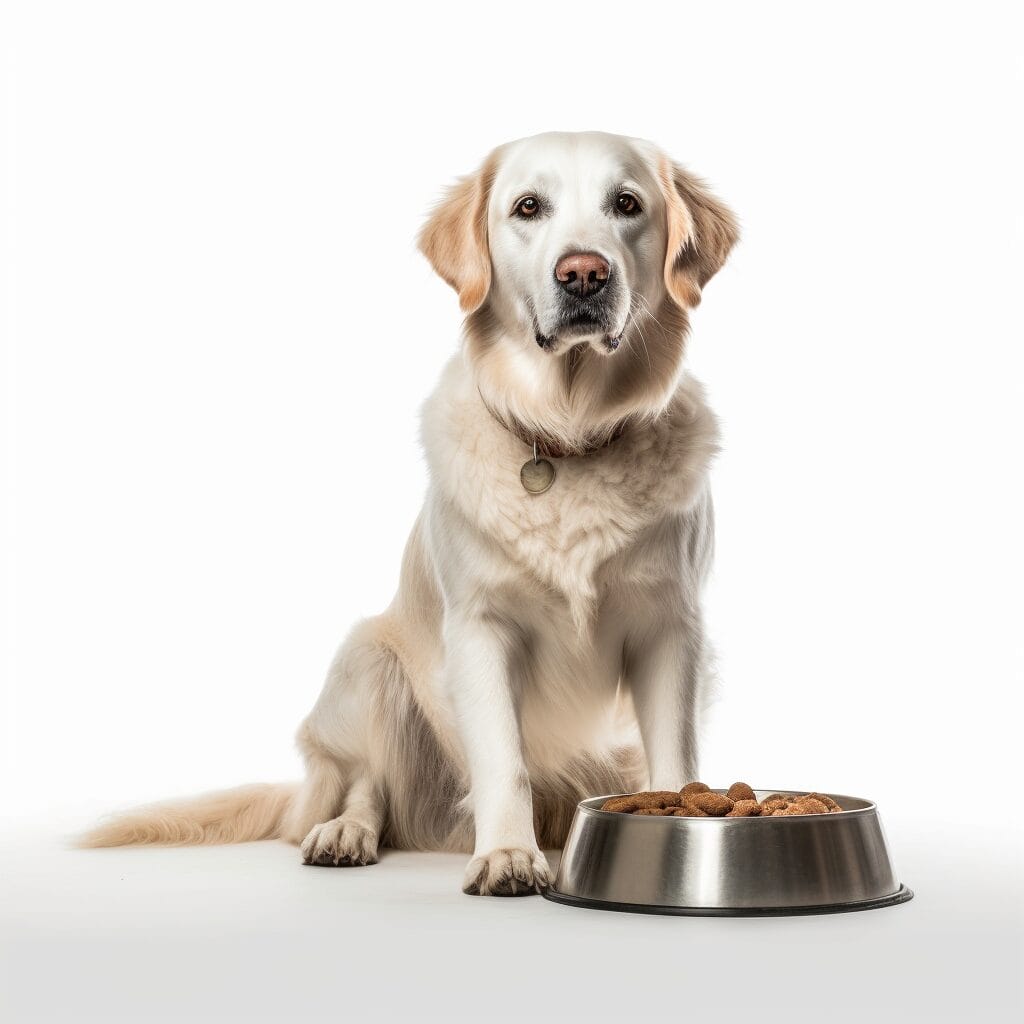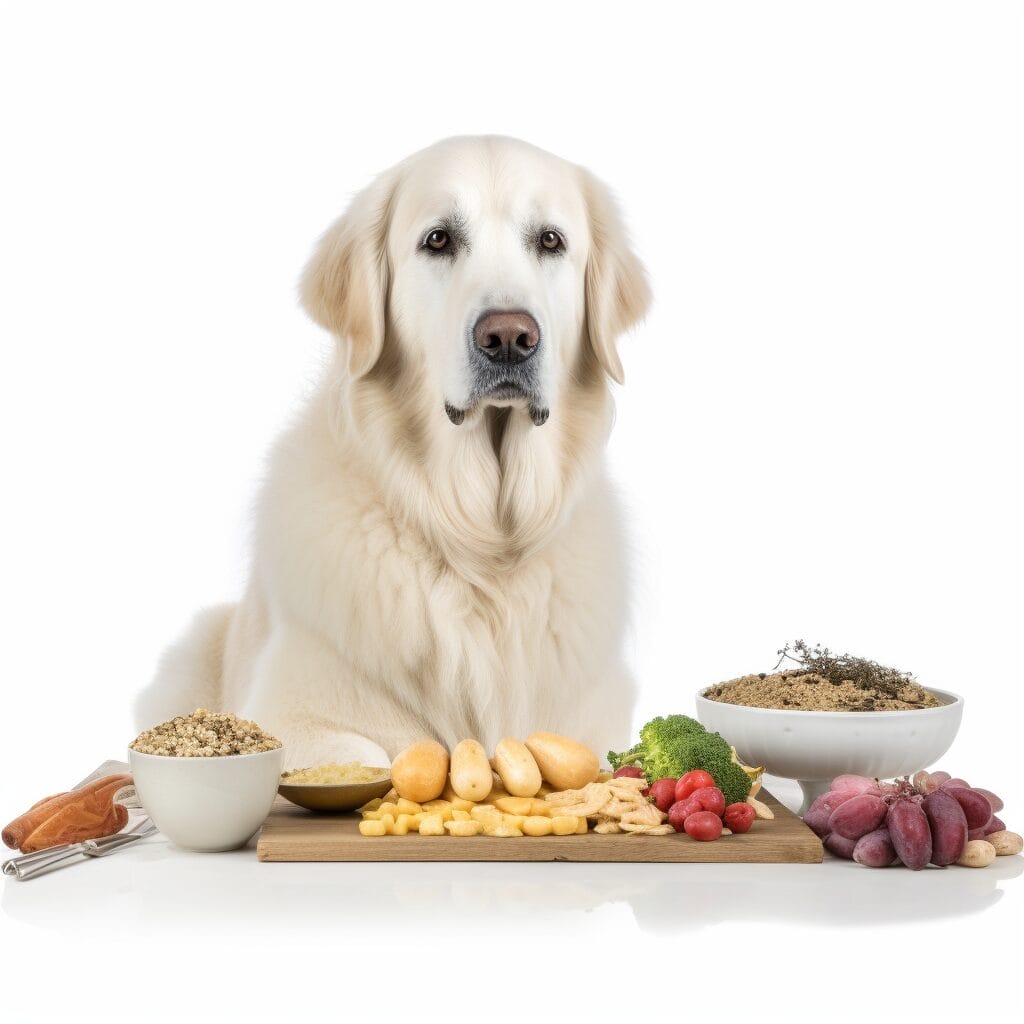Is your loyal companion starting to show signs of aging? It might be time to consider transitioning pets to senior dog food. But how do you know when it’s the right moment for this change? In this post, we’ll delve into the key indicators that signal it’s time for your furry friend to make the switch to pet food based on life stage, added ingredients, and nutrient. From decreased energy levels and potential weight management issues to specific dietary requirements, understanding these cues can help ensure your pet stays healthy and happy as they enter their golden years.
As our furry friends age, their nutrient needs evolve too. To guarantee they receive the best care possible, recognizing when it’s appropriate to introduce senior dog food, nutrient, and life stage is crucial. Let’s explore disease signs together and learn how we can support our beloved pets through every stage of their lives.
When to Switch to Senior Dog Food
Recognizing Age-Related Changes in Dogs

Physical Signs
As dogs age, they may experience changes in their physical appearance, abilities, and life stage. You might notice that your older dog is moving more slowly or has difficulty getting up from lying down. They could also develop a graying muzzle or experience a decrease in muscle mass as they age. Senior dogs may have dental issues, such as missing teeth or gum disease.
Understanding these physical signs can help you recognize when it might be time to transition your furry friend to senior dog food. For instance, if you observe that your once-active dog is now struggling with mobility or showing signs of arthritis, it could be an indication that they need a diet tailored to their changing needs.
Behavioral Changes
In addition to physical changes, aging dogs may display alterations in their behavior. This could include increased irritability, decreased activity levels, disorientation, or even separation anxiety. If your previously energetic and playful pup becomes less interested in activities they used to enjoy or starts having accidents indoors despite being house-trained, these behavioral shifts might signal the need for a dietary adjustment.
Recognizing both the physical and behavioral changes in your aging canine companion is crucial for providing them with the proper nutrition at this stage of life. By paying attention to how they move and behave on a daily basis, you’ll be better equipped to make informed decisions about transitioning them to senior dog food.
Signs Indicating the Need for Senior Dog Food

Changes in Activity Level
As dogs age, they may experience a decrease in energy and activity level. If you notice your once playful and energetic pup becoming more lethargic or showing less interest in physical activities, it could be a sign that they are entering their senior years. For instance, if your dog used to eagerly chase after toys but now seems disinterested or tires easily during playtime, this change in behavior might indicate the need for a transition to senior dog food.
Moreover, older dogs may also exhibit signs of stiffness or discomfort after physical activity. If you observe your furry companion experiencing difficulty getting up from lying down or climbing stairs, it’s time to consider switching to senior-specific nutrition tailored to support joint health and mobility.
Dental Health Issues
Another common indicator that your dog might benefit from transitioning to senior dog food is changes in their dental health. As dogs age, they can develop dental problems such as tooth decay, gum disease, and tooth loss. These issues can make it challenging for them to chew regular kibble effectively.
Switching to senior dog food with specialized formulations designed for easier chewing and digestion can help address these challenges. Look for options with smaller kibble size or softer textures that are gentler on aging teeth and gums while still providing essential nutrients.
Weight Management Challenges
Weight management becomes increasingly important as dogs grow older. Aging pups often experience changes in metabolism and reduced activity levels which can lead to weight gain if not addressed properly through diet adjustments.
If you notice your canine companion gaining excess weight despite maintaining the same feeding routine, it might be time to consider transitioning them to senior-specific formulas focused on weight management. These formulas typically contain lower calorie content while ensuring adequate nutrient intake crucial for aging bodies.
Understanding the Nutritional Needs of Mature Dogs

Nutritional Changes
As dogs age, their nutritional needs change. Senior dogs require a different balance of nutrients to support their aging bodies. For example, they may need lower calorie intake to prevent obesity and reduced fat content for better weight management. Older dogs often benefit from increased fiber to aid digestion and reduced phosphorus levels to support kidney health.
Senior dog food is formulated with these specific nutritional requirements in mind. It typically contains higher levels of certain vitamins and minerals that are essential for maintaining overall health in older dogs. For instance, senior dog food may have increased amounts of antioxidants like vitamin E and beta-carotene to boost immune function and protect against cellular damage.
Joint Health Considerations
One crucial aspect when considering the transition to senior dog food is joint health. As dogs age, they are more prone to developing arthritis or other joint-related issues. Therefore, senior dog foods often contain added glucosamine and chondroitin sulfate which can help maintain healthy joints by reducing inflammation and supporting cartilage development.
Moreover, omega-3 fatty acids are commonly found in senior dog foods as they offer anti-inflammatory properties that can alleviate joint pain and stiffness associated with aging.
Transitioning your furry friend from adult to senior dog food should be done gradually over a period of about 7-10 days by mixing increasing proportions of the new food with the old one at each mealtime until it’s fully switched over.
Key Differences Between Adult and Senior Dog Food

Nutritional Requirements
Senior dogs have different nutritional needs compared to adult dogs. As dogs age, their metabolism slows down, making it important to switch to senior dog food. Senior dog food contains lower calories but higher fiber content to support digestion.
As dogs get older, they may develop health issues such as arthritis or dental problems. Senior dog food often includes supplements like glucosamine and chondroitin for joint health, as well as additives that promote dental health.
Protein and Fat Content
Senior dog food typically has lower protein and fat content than adult dog food. While adult dogs require higher levels of protein for energy and muscle maintenance, excessive protein can strain the kidneys of senior dogs.
Reduced fat in senior dog food helps prevent obesity which is common in older dogs due to decreased activity levels. The lower fat content also supports heart health in aging canines.
The Importance of Senior Dog Food for Health Management

Signs of Aging in Dogs
As dogs age, their nutritional needs change. Senior dog food is specially formulated to address these changing needs. One of the key indicators that it’s time to transition your furry friend to senior dog food is their age. Typically, small breeds are considered seniors at around 11 years old, while larger breeds reach this stage at about 8 years old. Keep an eye out for signs of aging such as decreased energy levels, weight gain or loss, dental issues, and changes in coat quality.
Another sign that it may be time to switch your dog’s diet is the development of health conditions associated with aging. Conditions like arthritis and joint pain can benefit from a senior-specific diet containing ingredients such as glucosamine and chondroitin for joint support.
Nutritional Requirements
Senior dogs often have different dietary requirements compared to younger adult dogs. Lower calorie content can help manage weight gain due to reduced activity levels common in older pets. Look for senior dog food formulas with higher fiber content which aids digestion and prevents constipation common among elderly canines.
Older dogs may require specific nutrients such as antioxidants like vitamin E and beta-carotene which help support their immune system and cognitive function. Omega-3 fatty acids are also beneficial for maintaining healthy skin and coat in senior dogs.
It’s important not only when but how you make the transition from adult to senior dog food too! Gradually mix increasing amounts of the new senior formula into your pet’s existing adult food over a period of 7-10 days until they are solely eating the new formula.
Selecting the Best Senior Dog Food for Your Pet

Signs of Aging in Dogs
As dogs age, they undergo physical and behavioral changes. Slowing down, weight gain or loss, dental issues, and digestive problems are common signs of aging in dogs. These changes can indicate that it’s time to transition your pet to senior dog food.
Senior dog food is specially formulated to address the specific needs of aging dogs. It contains lower calories for less active lifestyles, joint-supporting supplements like glucosamine, and easy-to-digest ingredients suitable for sensitive stomachs.
Transitioning Process
When you notice signs of aging in your furry companion, it’s essential to make a gradual switch from adult dog food to senior dog food. Abrupt dietary changes can upset your dog’s stomach and cause digestive discomfort.
Start by mixing a small amount of senior dog food with the current adult formula. Over the course of 7-10 days, gradually increase the proportion of senior dog food while decreasing the adult formula until your pet is fully transitioned.
Making this slow shift allows your pet’s digestive system time to adapt without causing any distress or discomfort. Keep an eye on their weight, energy levels, coat condition, and overall well-being during this period.
Guidelines for Transitioning Your Dog to Senior Food

Signs It’s Time
If your dog is starting to show signs of aging such as decreased energy, weight gain or loss, dental issues, or changes in behavior and appetite, it might be time to consider switching to senior dog food. Keep an eye out for stiffness or difficulty moving around, as well as any health conditions that are common in older dogs like arthritis or kidney disease.
As your furry friend enters their senior years, their nutritional needs change. Senior dog food is specially formulated with lower calories and fat content but higher fiber and protein levels. This helps address the specific health issues that come with age while supporting overall well-being.
Gradual Transition Process
When making the switch from adult to senior dog food, do it gradually over a period of 7-10 days. Start by mixing a small amount of the new food into your pet’s current diet. Over the next few days, increase the proportion of the new food while reducing the old one until they are only eating the senior formula.
Rapid dietary changes can upset your pup’s stomach and lead to digestive issues like diarrhea or vomiting. By transitioning slowly, you give their system time to adjust without causing discomfort.
Consultation with Vet
Before changing your dog’s diet at any stage of life, consulting with a veterinarian is essential. They can provide guidance tailored specifically to your pet’s individual needs based on factors like breed, size, activity level, and existing health conditions.
Your vet may recommend additional supplements or adjustments based on blood work results or other diagnostic tests done during regular check-ups for older dogs. This personalized approach ensures that you’re meeting all of your pet’s nutritional requirements effectively.
Consulting a Veterinarian Before Changing Diets

Understanding Your Dog’s Unique Needs
Before making the switch to senior dog food, it’s crucial to understand your dog‘s unique needs. Dogs age differently based on their breed, size, and overall health. Small breeds tend to live longer than larger ones, while certain breeds are more prone to specific health issues as they age. For example, large breeds may experience joint problems earlier in life compared to smaller dogs.
Understanding these factors can help you determine when it’s time to transition your furry friend to senior dog food. Keep an eye out for signs of aging such as decreased energy levels, weight gain or loss, changes in coat quality, dental issues, and mobility problems.
It is essential not only to observe these signs but also consult with a veterinarian who can provide personalized advice based on your dog’s specific needs.
Benefits of Professional Guidance
Seeking professional guidance from a veterinarian before changing your dog’s diet offers several benefits. A vet can assess your pet’s overall health and recommend the most suitable time for transitioning them from adult food to senior-specific formulas.
Vets have extensive knowledge about canine nutrition and can provide valuable insights into choosing the right senior dog food tailored for your pet’s individual requirements. They consider factors like existing medical conditions or allergies that could impact dietary decisions.
Consulting with a vet allows you to address any concerns or ask questions about the transition process. This ensures that you’re well-informed and equipped with the necessary knowledge before making significant changes in your pet’s diet.
Final Remarks
Understanding the nutritional needs of your aging furry friend is crucial for their well-being. As your dog transitions into their senior years, recognizing the signs indicating the need for senior dog food becomes paramount. The key differences between adult and senior dog food, along with the importance of senior dog food for health management, underscore the significance of this dietary shift. Selecting the best senior dog food and following guidelines for transitioning your pet to this new diet are essential steps, but always consult a veterinarian before making any changes.
Now that you’re equipped with the knowledge to identify when it’s time to switch to senior dog food and how to go about it, take proactive steps in ensuring your loyal companion’s health and happiness as they age. Your furry friend deserves the best care, and providing them with suitable nutrition tailored to their senior needs will undoubtedly contribute to their vitality and longevity.
Frequently Asked Questions
When should I switch my dog to senior dog food?
It’s generally recommended to transition your dog to senior dog food when they reach around 7-9 years old, depending on their breed and size. Keep an eye out for signs of aging and consult your vet for personalized advice.
What are the signs indicating that my dog needs senior dog food?
Signs such as decreased energy, weight gain or loss, dental issues, and changes in coat quality can indicate the need for a switch to senior dog food. These signs often suggest age-related changes that require specific nutritional support.
How do I select the best senior dog food for my pet?
Look for senior-specific formulas with higher levels of certain nutrients like protein, joint-supporting compounds, and easily digestible ingredients. Consider your pet’s specific health needs and consult with your veterinarian for tailored recommendations.
Can I transition my dog directly from adult to senior food?
No, it’s important to gradually transition your dog by mixing increasing proportions of the new senior formula with their current adult food over about a week. This helps prevent digestive upset during the change in diet.
Why is it important to consult a veterinarian before changing diets?
Consulting a vet is crucial as they can assess your pet’s overall health status and provide personalized recommendations based on factors like weight management, joint health, dental care needs, and any existing medical conditions. Their guidance ensures a smooth transition while meeting all nutritional requirements.








